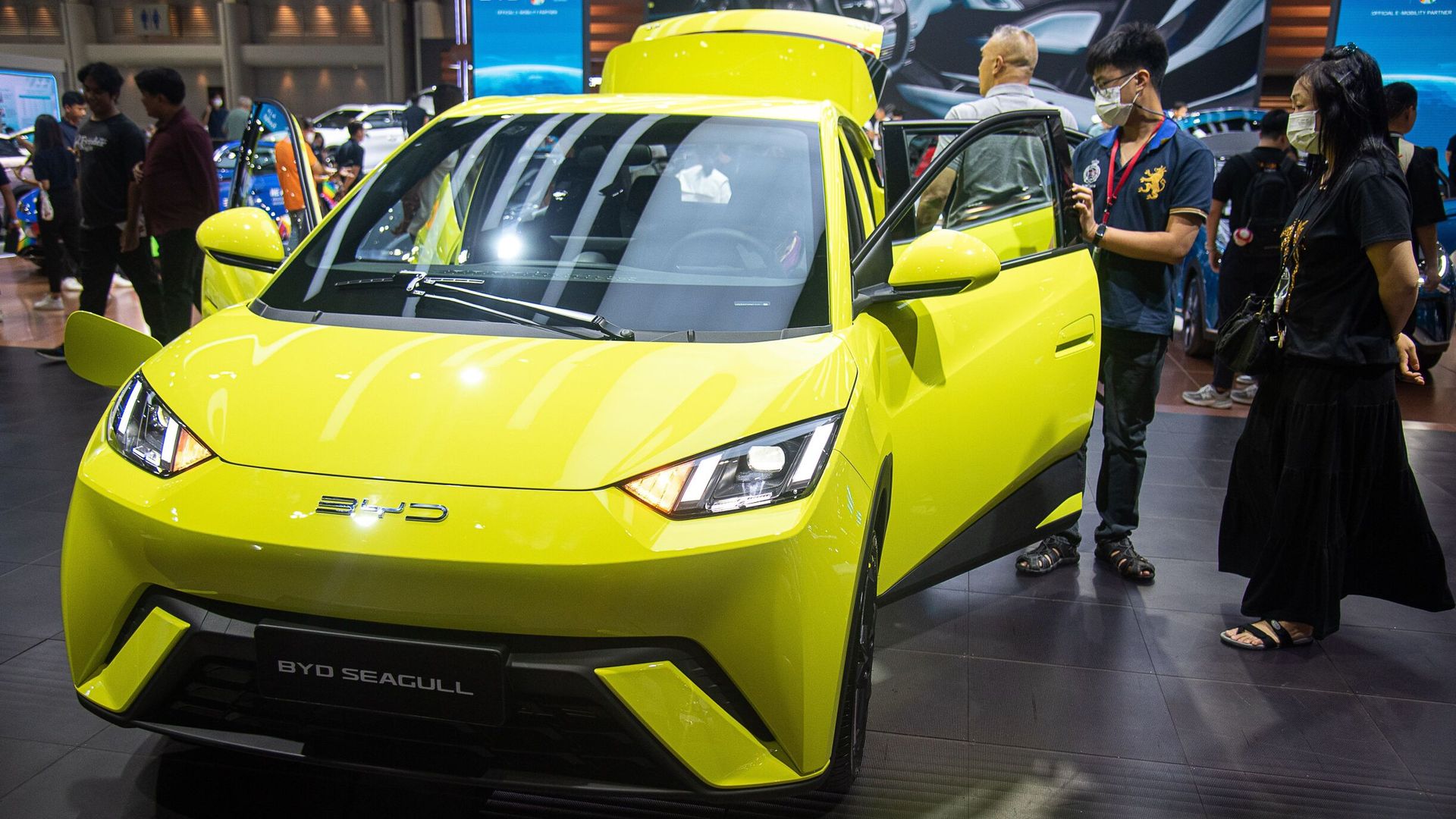There are at least three things Joe Biden’s new tariffs on Chinese goods are intended to achieve.
Interestingly enough, preventing Chinese goods from entering the United States (typically the main purpose of tariffs) is arguably the least important of them.
That’s because the most eye-watering of all the new tariffs – a 100% rate on electric vehicles – is being imposed on a category where China doesn’t really compete all that much. Consider: last year the US imported nearly $19bn worth of electric cars. Of those imports, a mere $370m came from China – less than 2% of the total.
Money latest: The fast food appearing on menus at Michelin starred restaurants
That’s not to say that China is not already a world leader when it comes to making electric cars.
Right now a large chunk of electric cars being bought in Europe and elsewhere besides are Chinese. You might even be driving one today, because most of the Chinese cars being sold on these shores don’t actually have Chinese badges – like BYD. If you have a Tesla Model 3, a Tesla Model Y, an MGs or a Polestar… you’re driving a Chinese car.
Back when cars were all about their internal combustion engines, China never used to be a motoring manufacturing powerhouse. But thanks in large part to enormous support packages, China has achieved dominance of electric car manufacture.
Please use Chrome browser for a more accessible video player
It has done so in part because it has invested so much not just in making those cars but, even more importantly, in making the batteries inside them – not to mention the chemicals and minerals that go inside those batteries. Look at the global electric vehicle business and China has dominance all the way down the supply chain.
It’s a similar story in much of the green technology sector. China makes the vast majority of the world’s solar panels. It’s staking out a leading position in making wind turbines, not to mention green hydrogen electrolysers and carbon capture technology.
This helps explain why the tariffs announced by the White House today are not just focused on electric cars.
There will also be a doubling of tariffs on solar panels to 50%, as well as further tariffs on steel and aluminium. The justification for the latter two is that Chinese steel and aluminium is produced with more carbon emissions than elsewhere.
They are part of a broader Biden strategy. Many assumed there would be a big shift in economic diplomacy when Mr Biden took over from Donald Trump, and that he would rescind the tariffs and rules the Trump White House imposed on Beijing.
However in reality, the Biden White House has, if anything, doubled down. They have introduced a host of new subsidies on the production of green technology (the Inflation Reduction Act) and semiconductors (the CHIPS Act), fighting China at its game.
The back story here is that the world is on the brink of a new industrial revolution. As countries around the globe push towards net zero, it necessitates a panoply of new industries – to provide the green energy and cleaner products necessary to hit that goal. And the US is determined not to allow China to win the race to build out these new industries. Hence why the White House is now going one step further with tariffs.
Economists dislike tariffs. They fret about what happened in the 1930s, when the global economy slid into depression as countries around the world followed “beggar-thy-neighbour” policies of ever-increasing tariffs. They fear this might happen again, and, frankly today’s tariffs from the White House probably make such an outcome more likely.
So why is this administration, whose Treasury Secretary Janet Yellen is hardly what you’d call a radical economist, going to such lengths? That brings us back to the other two things these new tariffs are intended to achieve.
Keep up with all the latest news from the UK and around the world by following Sky News
The first is to do whatever it takes to give the US a fighting chance at competing with China at producing electric cars and solar panels. Today’s measures might be construed as a tacit admission that the subsidies in the Inflation Reduction Act aren’t helping enough in and of themselves. Whether these tariffs help anymore is an open question. China’s lead is extensive. But we’re about to find out what happens when the world’s two economic superpowers pull out all the stops to compete with each other.
The final reason for these tariffs is more prosaic – but it might actually be the most important of all (at least for Mr Biden himself). They are intended as a political message to show how tough he is on China, and to outdo Donald Trump himself. These tariffs are aimed as much at appealing to the American electorate ahead of the election as they are to affect trade with China.
Nonetheless, they will doubtless provoke some tit-for-tat tariffs from China. Trade – and industrial strategy – have never been so dramatic, or interesting.





